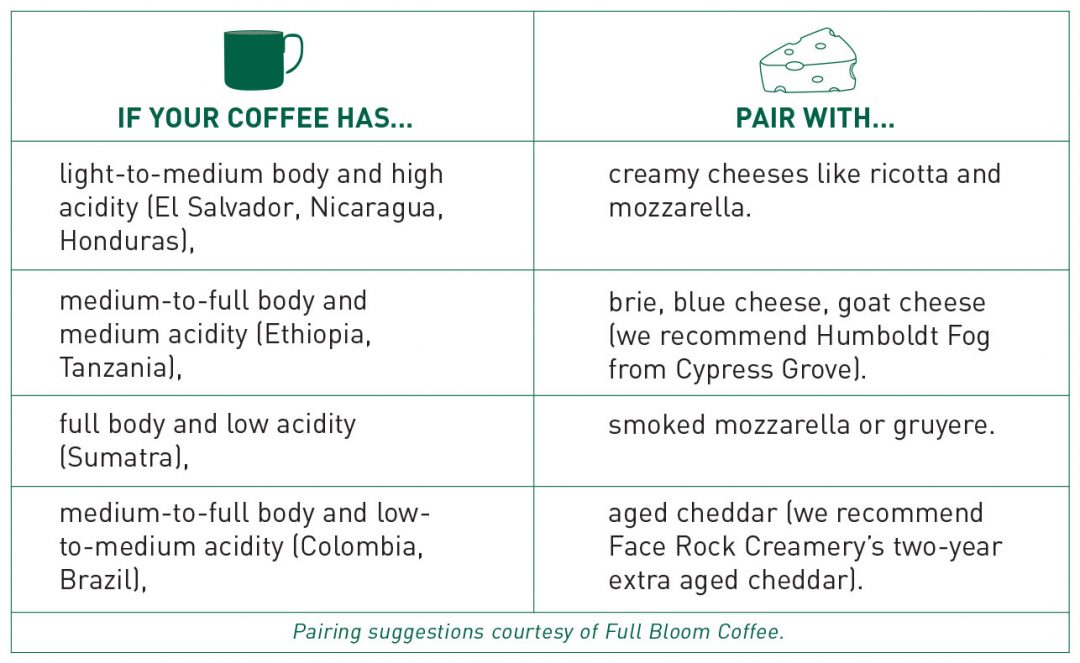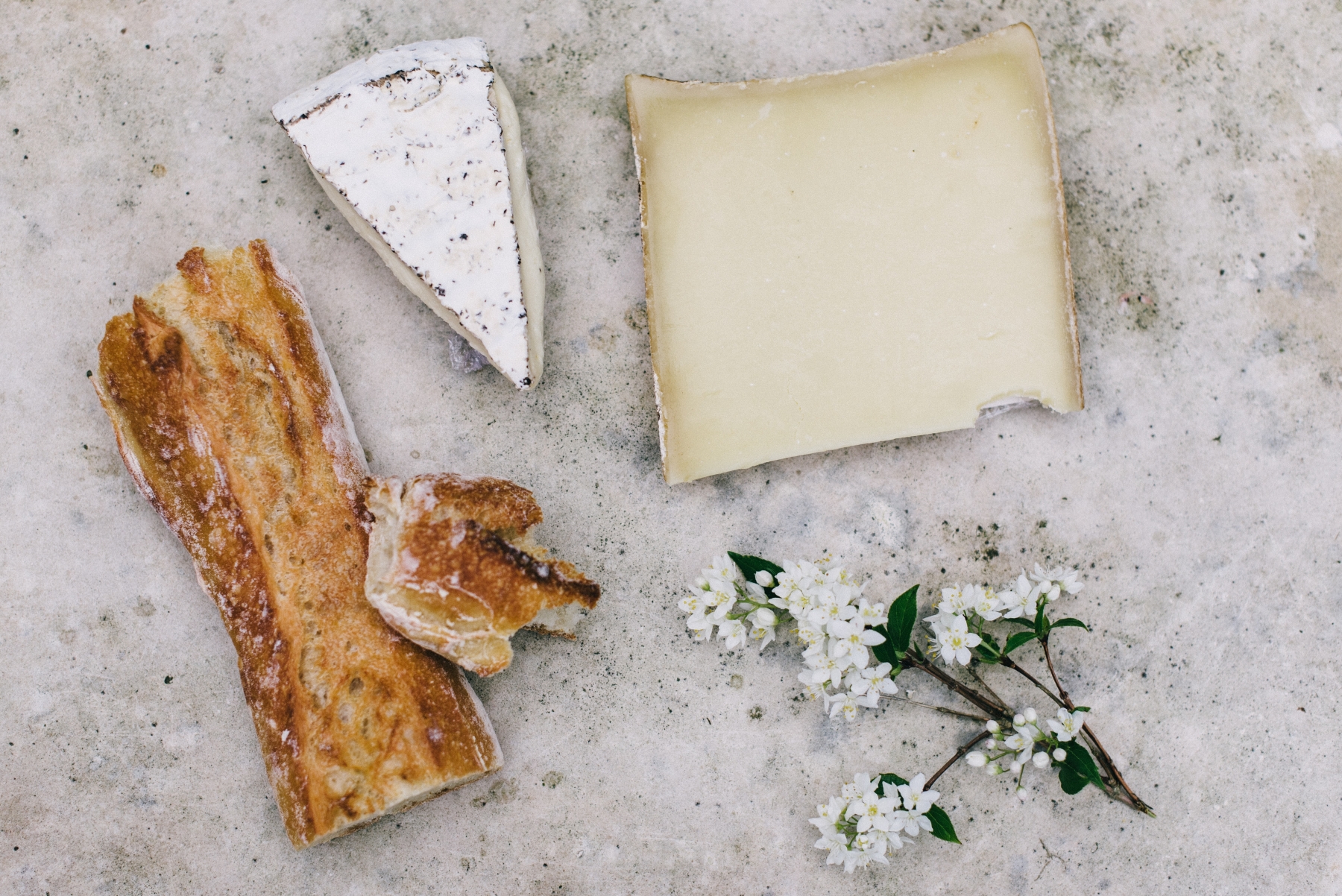Dabbling in the world of pairings is fun. A successful marriage of food and beverage creates harmony among contrasting flavors and accentuates complementary characteristics, delivering an exciting experience for the palate.
The specialty coffee realm provides a playful space for flavor combinations, especially when it comes to the industry’s second-favorite dairy product: cheese. Its high-fat content, heavy body, and overall creaminess make cheese ideal for balancing coffee’s acidity.
Sweet And Decadent
Cheeses with sweetness work well for coffee pairings, says Greg Drobot, president of Face Rock Creamery in Bandon, Oregon. “Our 2-Year Extra Aged Cheddar goes really nicely with coffee because it has a little bit of sweetness to it,” Drobot says. “Our Apricot Fromage Blanc is another great pairing because its sweetness and creaminess contrast nicely with coffee—similar to putting cream and sugar in coffee.”
A successful coffee and cheese pairing starts by understanding your product. Thoughtfully tasting the unique flavors of each cheese and coffee is essential in experiencing how tastes and textures transform once the items are combined. A good pairing will create a new flavor experience while still accentuating these initial flavors.
Cafés can introduce pairings to their customers by hosting a pairing event (also a great excuse to forge partnerships with local creameries). These events provide an opportunity for employees to engage with your customers and community and serve as a learning opportunity for everyone involved—all while creating a unique draw for your business.
In 2017, Denver, Colorado’s Copper Door Coffee Roasters partnered with local St. Kilian’s Cheese Shop to curate a tour through three coffee and cheese pairings.
The cheese and coffee pairing event was an easy choice. Copper Door already had a strong schedule of monthly educational classes, covering everything from dominant flavors in coffee regions, different cold brewing methods, interesting pairings, and a good relationship with St. Kilian’s. But customers were still surprised by the combination, says Copper Door owner Hannah Ulbrich. “Most of the people who came to our class were curious because it was so different. We did three cheeses with coffee prepared in different ways.”

The standout pairing of the event was a sheep’s milk blue cheese (Little Boy Blue from Hook’s Cheese Company, Wisconsin), topped with a honey-hazelnut caramel drizzle and paired with Copper Door’s espresso. “It was funky and so delicious,” Ulbrich says.
Beyond Coffee and Cheese
Royal Tea New York hosted two cheese pairing events this winter featuring select teas and chocolates in a guided format that encouraged thoughtful tasting and conversation. Royal worked with the French Cheese Board to create pairings that followed traditional rules—such as balancing astringency with fat—and some that broke the rules a little bit.
“A lot of the guidelines for pairing like wine work, but some rules are meant to be broken,” says Ravi Kroesen, tea director of Royal Tea New York. “Salty and sweet, and astringency versus fat can work well, provided there isn’t a lot of salt in the cheese.”
The standout pairing was a goat cheese with a second flush Darjeeling, which Kroesen describes as creating a “chord shift”—a flavor profile unique to the pairing. Another notable pair? “A Mimolette with the Phoenix Oolong. Mimolette has a high salt and a lot of nuttiness, which paired well with the sweetness of the oolong,” Kroesen says.
Pairings are meant to be an experience of exploration and discovery. As a business owner, you can choose how much structure you provide to guests. A good place to start? Choose one coffee and focus on finding a selection of cheeses with complementary flavors. Once you’ve built a basic pairing menu, you’ll be ready to let your palate guide you and your customers through all the world of parings has to offer.
Kroesen reiterates the open-ended nature of tastings—and the benefits they bring: “There’s no wrong answer. We all have the same equipment, but how it’s interpreted is so subjective in terms of olfactory and taste.”
Cover photo by Pass Horizon
This article was originally published on September 11, 2017 as has been updated according to Fresh Cup’s editorial policy.
















